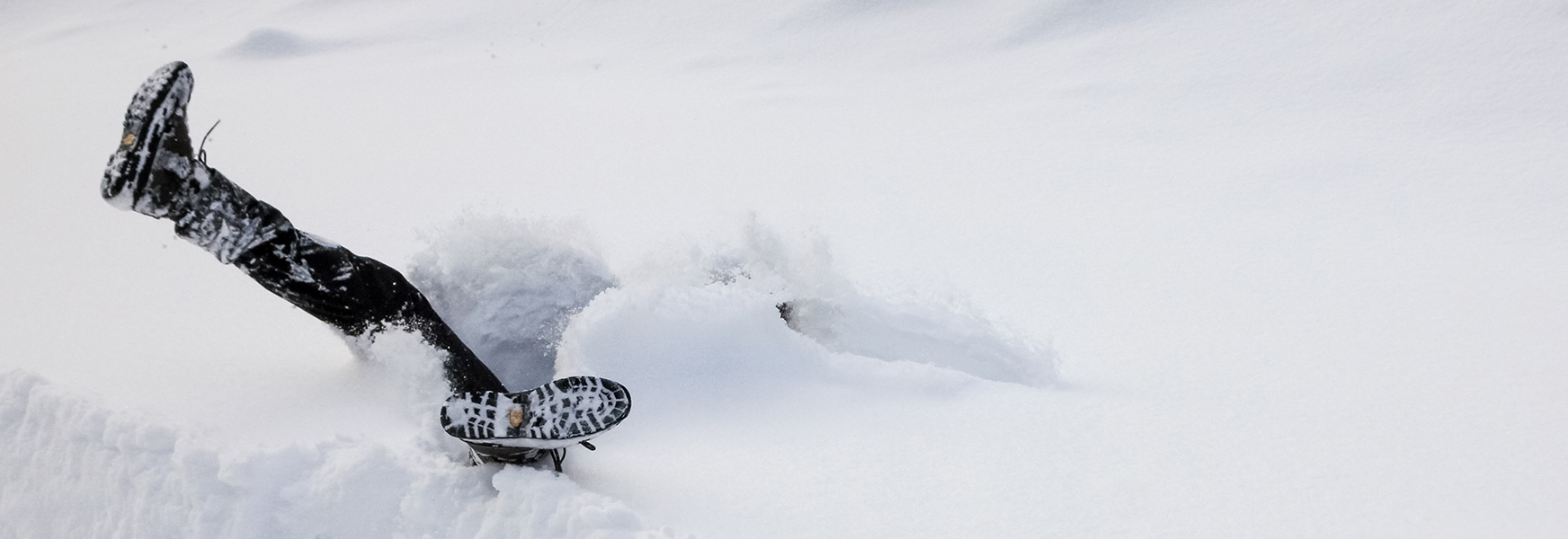Start the Year Off on the Right Foot by Preventing Slips and Falls

With the dawn of a new year, let’s all start off on the right foot by keeping our feet underneath us when afoot. MEMIC has posted a plethora of safety blogs on slips, trips, and falls and rightfully so as this trilogy of hazards constitutes this insurer’s leading loss source in both claim frequency and severity. A look at The MEMIC Group’s data reveals roughly 460 STF claims per month which increases to over 700 per month when factoring in ice and parking lot/vehicle-related STFs. Just in the years 2015-2017, MEMIC has paid over $105 million in STF claims. While that’s some “serious cash,” the toll for both injured employee and employer in pain and suffering is even more dramatic.
On a national scale, the Bureau of Labor Statistics (BLS) reported 42,480 workplace injuries in 2014 involving ice, sleet, and snow, with at least one day away from work. Of this number, 82 percent (or 34,860) were due to falls on the same level. And while it “stands” to reason that most of these injuries occur in northern latitude states, even the Deep South is not immune from the occasional winter storm or touch of Jack Frost creating treacherous ground conditions for a slip and fall incident. The BLS site graphically displays the same-level fall data with maps of the U.S. showing total occupational injuries, incidence rates, and median days away from work for recovery.
Clearly, staying upright on ones two feet can be a challenge for a variety of reasons. Here are some tips from some previous posts to help you keep an ear to the ground, figuratively speaking of course, on standing tall with poise when it comes to defying gravity on walking and working surfaces.
- Park in locations away from sheets of glare ice and look for spots with scattered salt or sand, says our Seeing Stars on Ice blog.
- When stepping out of the vehicle, test the ground surface with the left foot for a firm foothold before shifting body weight out of the driver’s seat.
- When walking on ice and snow-covered parking lots or walkways take short steps and walk at a slower pace, so you can react appropriately to quick changes in traction, says David Darnley in our Winter Slip, Trip and Fall Safety Tips blog.
- Plan for the weather by wearing appropriate footwear—even if you’re only going across the parking lot and into the building, wear a low heel boot or shoe with good tread made for outdoor winter weather. You can carry in high heels or leather soled shoes and put them on when indoors.
- Always use handrails when walking up or down steps. Take your time and plant your feet firmly on each step.
- Assess your living and working spaces to identify potential hazards. Consider slip resistant mats, remove cords, clutter, and other tripping hazards. Improve lighting and secure or remove loose rugs, says Richard Kordell in our Let's Not Fall Down on the Job.... or Anywhere Else blog.
And lastly, don’t let a phone fixation lead to bone fixation with screws, pins, and possibly a metal plate. Pocket your phone while in transit!
For more STF prevention information, check out the 5-part series starting with Slip and Fall Prevention - The S.A.F.E. Way (Part 1) or, if pressed for time, the condensed version Stay SAFE From the Winter Slip & Fall.
By Greg LaRochelle

